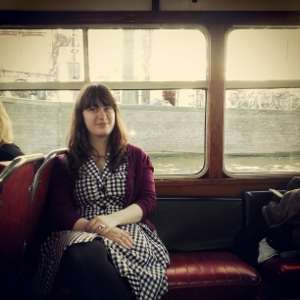New Year’s concerts have never been that appealing to me: I am not a great lover of Viennese waltzes and that is what most of them consist of. But fortunately this year the Holland Symfonia had a New Years concert with a twist: Russian fireworks. Playing music by Mussorgsky, Shostakovich, Khachaturian and Prokofiev, the Holland Symfonia offered an exciting program, of course including some waltzes.
Mussorgsky’s Overture to Khovashchina was not completed by the composer himself and tonight we heard a version completed by Dmitri Shostakovich. The music evokes images of a sunrise and a river, and it was a beautiful opening to the evening. There was a sense of serenity to this overture that did not quite fit in with the rest of the music, but as a start to the concert it was not unsuitable.
Shostakovich wrote his Concerto for piano, trumpet and strings when he was 27 years old and it bears all the signs of his young, enthusiastic style. Pianist Wibi Soerjadi certainly has enough skill to play the piece, but he perhaps lacks the temperament – he excelled in the slower, quieter sections but at other times his playing seemed almost too careful. Although at the very end of the concerto, some of the energy and power that had been missing appeared, which made for a great finale. There are some notorious changes in tempi in this concerto, and the orchestra and pianist handled these with great precision, though it could have used some more energy.
Khachaturian’s Masquerade Suite consists of five pieces extracted from the music he wrote to accompany a play by Lementov, and tonight Holland Symfonia played four of the movements. Part 1 was a waltz: the first waltz of the evening! One of Khachaturian’s more famous pieces of music, the Waltz is a wonderful work. In the play by Lementov, a character calls out “How beautiful the new waltz is! ... Something between sorrow and joy gripped my heart:” and this is precisely what Khachaturian achieved. Part 5, “Galop,” was also particularly fun, reminding me of Tom & Jerry and bringing a smile to many people’s faces. A New Year concert should be a celebration and an evening of fun, and this suite was certainly more than appropriate for that.
Sergei Prokofiev composed quite a few waltzes and even compiled some of them into a Waltz Suite, from which we were treated to three. The first and third were taken from the ballet Cinderella and the second waltz, “Mephisto Waltz” came from the movie Lementov. Even though the waltzes from Cinderella have a very recognizable structure, there is something about Prokofiev’s writing that means that – in contrast to Viennese waltzes – you are not constantly aware that it’s a waltz you’re listening to. The structure becomes unimportant and it is only the melodies and overall feel of the music you’re concerned with. The “Mephisto Waltz” has a different structure entirely: although it is in triple time there is something rather raucuous and sinister about it. These three waltzes by Prokofiev were the highlight of the evening for me: such incredible works of music, played perfectly by the Holland Symfonia.
Shostakovich’s Suite for Variety Orchestra no. 1 is often erroneously known as the Jazz Suite no. 2, which was actually lost during the Second World War (a piano score was discovered in 1999). The Suite for Variety Orchestra consists of eight movements, the most famous being “Waltz no. 2.” The Holland Symfonia treated us to other movements; “March”, “Dance no. 1” (a reworking of “Folk Feast” from The Gadfly), “Lyric Waltz,” “Waltz no. 1” and “Finale.” In many ways the work is not very Shostakovich-like; it is light-hearted and puts a smile on your face, it doesn’t have the undercurrent of terror that you hear in many of his works. What the Suite for Variety Orchestra instead shows is an incredible skill for writing catchy melodies and easygoing music. The Holland Symfonia were led with much enthusiasm by Otto Tausk, who danced and smiled as much as I wanted to. As an encore the orchestra played the two remaining movement of the suite: “Dance no. 2” and “Waltz no. 2.”


